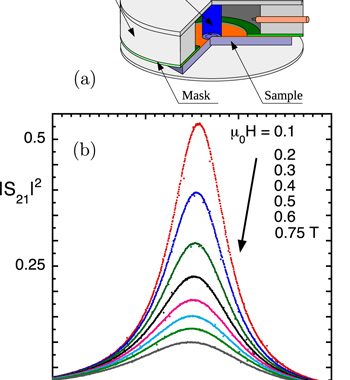
Intrinsic anisotropy and pinning anisotropy in nanostructured YBa2Cu3O7-delta from microwave measurements
Authors: Pompeo, A. Alimenti, K. Torokhtii, E. Bartolomé, A. Palau, T. Puig, A. Augueri, V. Galluzzi, A. Mancini, G. Celentano, X. Obradors and E. Silva
Supercond. Science & Technology 33, 044017 (2020)
Abstract: Anisotropy is an intrinsic factor that dictates the magnetic properties of YBa2Cu3O7−δ and therefore has a great impact on many applications. Artificial pinning centres are often introduced in an attempt to mitigate its effect, resulting in less anisotropic electrical and magnetic properties. However, the nanoengineering of superconductors makes the quantification of the anisotropy itself uncertain: the intrinsic anisotropy due to the layered structure, quantified by the anisotropy factor γ, mixes with the additional anisotropy due to pinning. As a consequence, there is no consensus on the experimental anisotropy factor γ that can result in YBa2Cu3O7−δ when directional (twin planes, nanorods) or isotropic defects are present. We present measurements of the magnetic field and angular dependent surface impedance in very different nanostructured YBa2Cu3O7−δ films, grown by a chemical route and by pulsed laser deposition with different kind of defects (nanorods, twin planes, nanoparticles). We show that the surface impedance measurements are able to disentangle the intrinsic anisotropy from the directional pinning anisotropy, thanks to the possibility of extracting the true anisotropic flux–flow resistivity and by correctly exploiting the angular scaling. We find in all films that the intrinsic anisotropy γ = 5.3 ± 0.7. By contrast, the pinning anisotropy determines a much more complex, feature–rich and nonuniversal, sample–dependent angular landscape.
